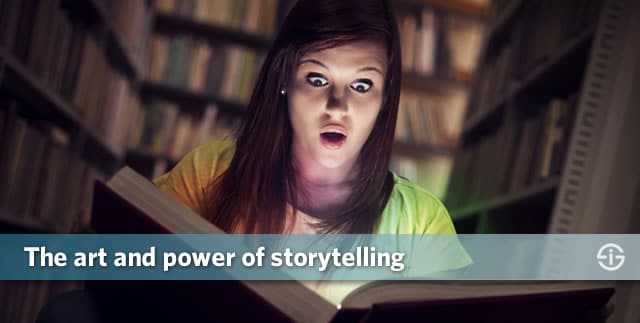Storytelling and content marketing go hand in hand. Yet, the art of storytelling stretches further than the narrative in any form of content.
Do brands create stories? Do stories create brands? Or is the power of storytelling for brands and branding simply so pervasive we can’t even begin to see the end and the beginning?
Storytelling of course is an ancient art (and part science) which is tackled in so many domains, from the study of ancient cultures to movie making, fiction writing and branding. Yet, it has never been ‘hotter’ than today. The principles and success factors are closely related with word of mouth marketing, social sharing, social media marketing in general, brand perception and the very essence of content marketing.
Telling and sharing stories: THE fundamental human activity (even when talking to ourselves)
Storytelling is so much more than telling stories in marketing and communications for businesses.
It is, among others, an essential content marketing technique that has a crucial place in a content marketing strategy, the ‘conditio sine qua non’ for businesses that want to make the difference in these social and content-intensive times.
Yet, what is the difference between boring and soulless content as companies continue to create it on one hand and stories that don’t just stick but also engage on the other? How do you create stories, nurture them, stimulate them,…? It won’t come as a surprise that storytelling needs a strong focus on what people want to hear and share, once again shifting the view from the traditional ways of corporate messaging to a connected content strategy within an integrated marketing approach whereby people are key and their customer experience leads to stories about your brand.
[the_ad id=”27933″] [blockquote author=”Doug Kessler”]Storytelling is patterned cognitive play (says Brian Boyd, author of “The Origin of Stories“, which I loved). Read more.[/blockquote]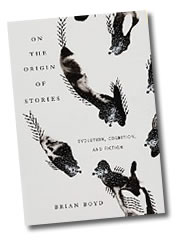
However, regardless of how ‘hot’ it may be (and should be), it’s also often misunderstood, both from a content marketing and branding perspective.
Some see storytelling as just a technique in the creation of written and visual content. Although it is most certainly ALSO about that, it’s about much more and raises various important questions, each with their many answers. Furthermore, the use of storytelling in content marketing and beyond has evolved and will continue to evolve (visual, transmedia, two-ways, collaborative).
[blockquote author=”Lee Odden”]Single format storytelling has evolved into transmedia storytelling and will keep doing so. Read more. [/blockquote]Questions to ponder regarding storytelling in a content marketing context
Do you know what stories your customers are telling? The narrative behind your reason to be, act and engage? The ways to connect these spheres? Some questions to ask.
- What is the story and narrative behind everything you do as a brand, ranging from what you stand for to the reason why you developed solution X or decided to support ‘good cause Y’? How can you get to that story that’s part of your brand and even people’s DNA instead of to just the facts?
- How do you actually connect with people in the language they understand best: the language they can “visualize” in a story-like context? And – even further – how do you ‘create’ the stories that will cause a change in behavior or a change of perception?
- What types of stories appeal to your content marketing “personas” or – if you want to stay closer to the art of storytelling and human emotions – the different archetypes Jung developed based on his deep psychological insights and…ancient stories?
- What about the stories your customers and ‘audiences’ are already telling? How do you listen to those and include them? How can you even come to some form of collaborative storytelling that goes far beyond any reach or goal you imagined?
- How much ‘control’ can you realistically have in an age where the value of a brand increasingly is in the eye of the beholder and their social connections? Where perception is more about personality, trust, openness, transparency, relevance and participation? About standing for something as a brand and voicing it in an utterly customer-centric, yet genuine and firm way? How can storytelling – with these shifts in mind – place brands in the minds, hearts and wallets of people? Or in other words: do consumers create stories and brands?
- How can you use storytelling in less branding-related ways and in a more demand generation related context ? Are there any differences? Do the same principles apply?
- How do you make use of digital information and the user-generated content out there, as well as of all these new ways we have to tell stories in digital storytelling, combining art (creativity) and science (data)?
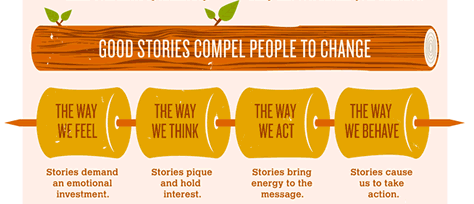
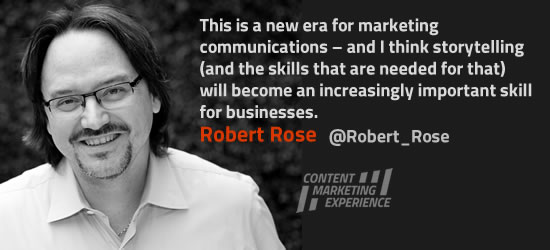
There is so much more to be said about stories, from all potential (content) marketing goals. As Bryan Eisenberg, twice at one of our conferences before, reminds us: “Effective content marketing is about mastering the art of storytelling. Facts tell, but stories sell“.
And we haven’t even talked storytelling and visual content yet. As Kelly Hungerford puts it: the 7 elements of visual storytelling are: design, personalization, usefulness, personality, storytelling, share-worthiness and real-time.
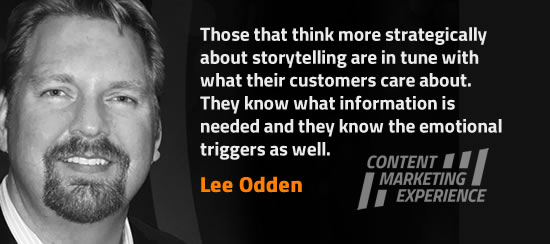
The Periodic Table of storytelling
Check out the infographic below we once again stumbled upon today and think stories – in a structured way but full of passion.
It’s really a screenshot, leading to the – interactive – Periodic Table of Storytelling page by “TV tropes”, a wiki for fiction writers, featuring archetypes, plots, story structures, heroes and so much more.
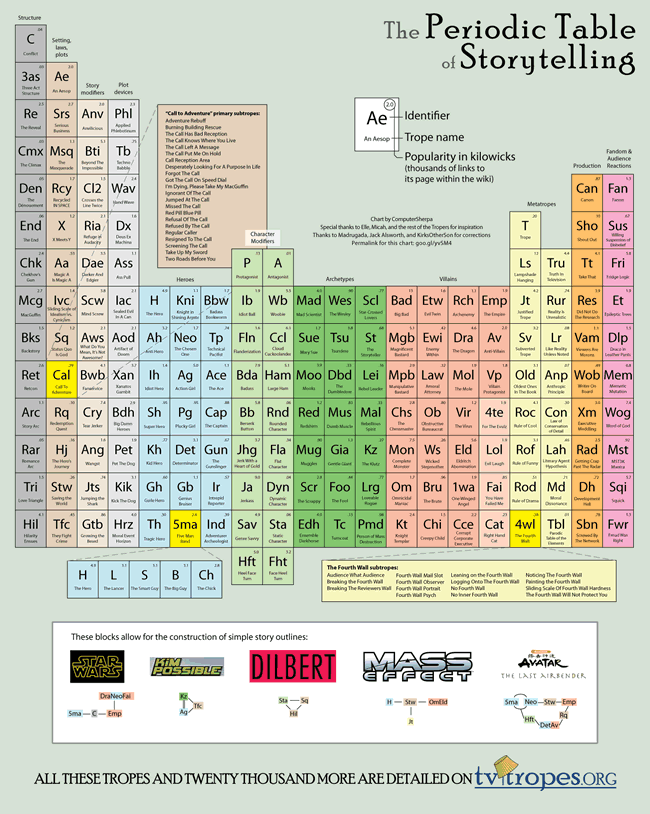
More stories on the role and evolving art of stories
Content sharing and storytelling: why and how people share content
What is the purpose of a story? It needs to be picked up, passed on and shared. The most inspiring stories are those that are massively shared and find a place in our common unconsciousness to live on for ever. Can you achieve that same level of depth when “telling stories” for content marketing or other purposes? It all starts with understanding what makes people really passionate, creating a great story and, last but not least, understanding why people share content and stories to begin with! In our article on content sharing and storytelling we…share a wealth of information, insights and stories on how and why people share content.
Digital storytelling: when art and science connect emotions
Is there such a thing as digital storytelling? Fact is that in an increasingly digital and data-driven environment, creativity and data, art and science, narrators and listeners, and insights and emotions all can meet to connect people and brands better than ever. Read why data and measurement are not optional in digital storytelling but a must to truly connect emotions in a mix of art and science.
Robert Rose on content marketing and storytelling
Robert Rose is the co-founder of the Content Marketing Institute, along with Joe Pulizzi. One of Robert’s many passions is storytelling as he originally dreamed to be a songwriter and screenwriter. Robert believes so much in the power of storytelling that he thinks storytellers will have an inherent skill position in organizations going forward. Read Robert’s thoughts in our in-depth interview!
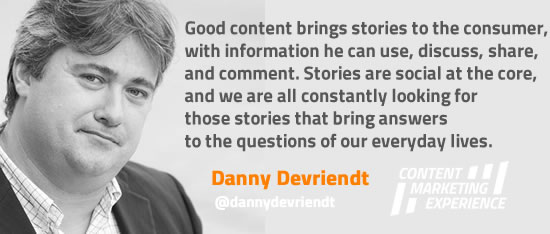
Top image: Shutterstock – Copyright: gpointstudio – All other images are the property of their respective mentioned owners.


